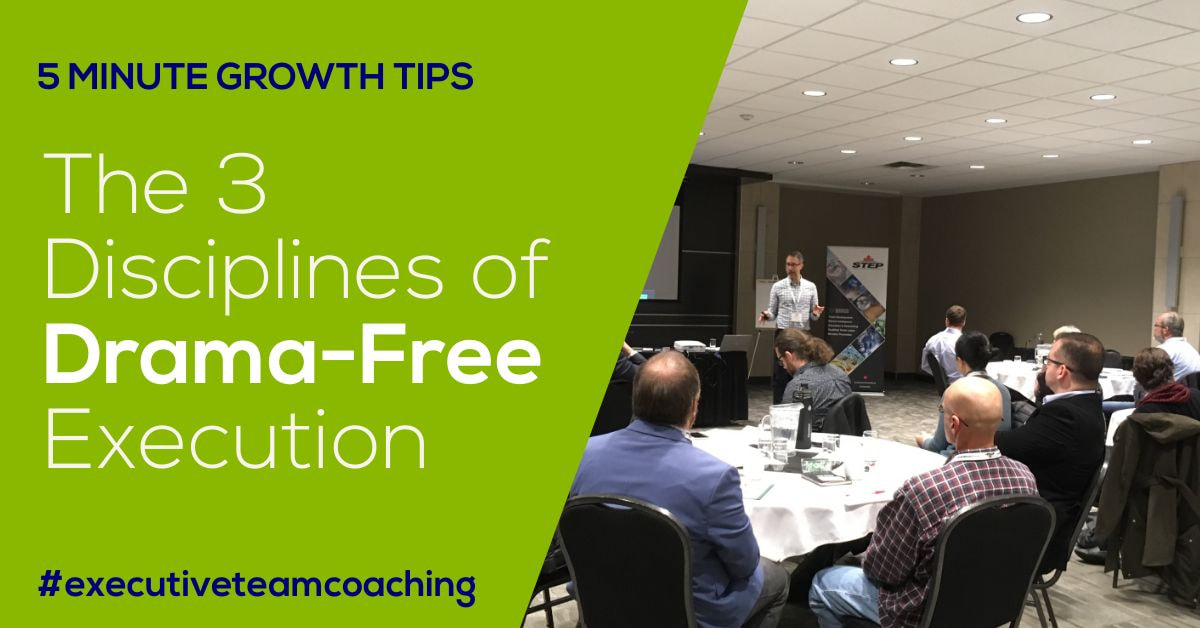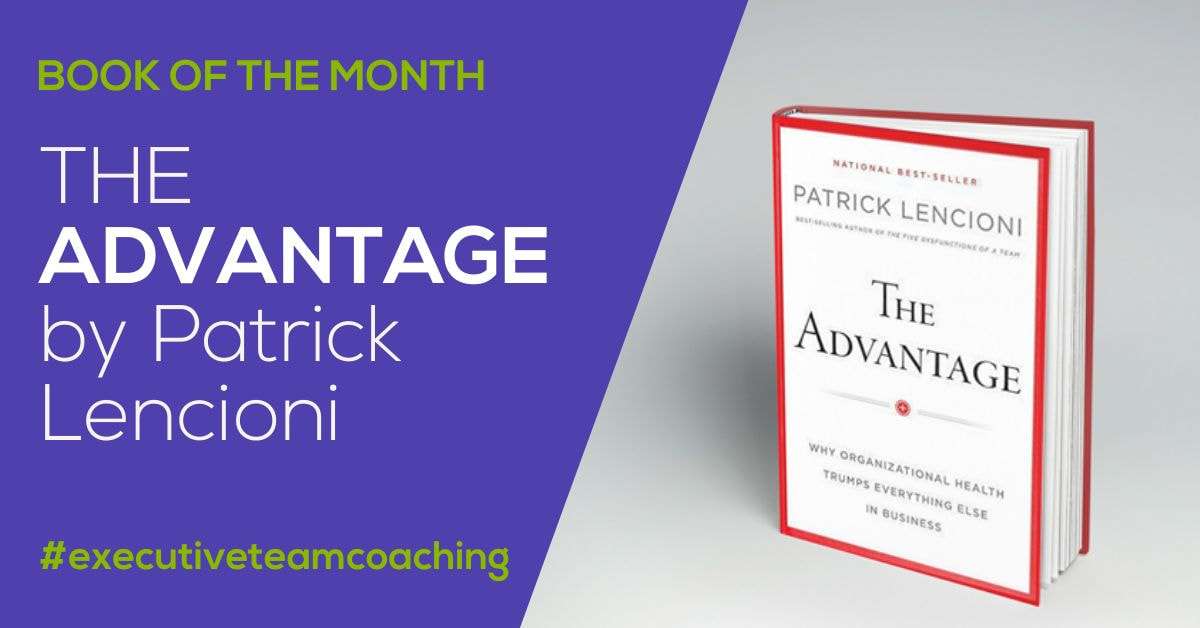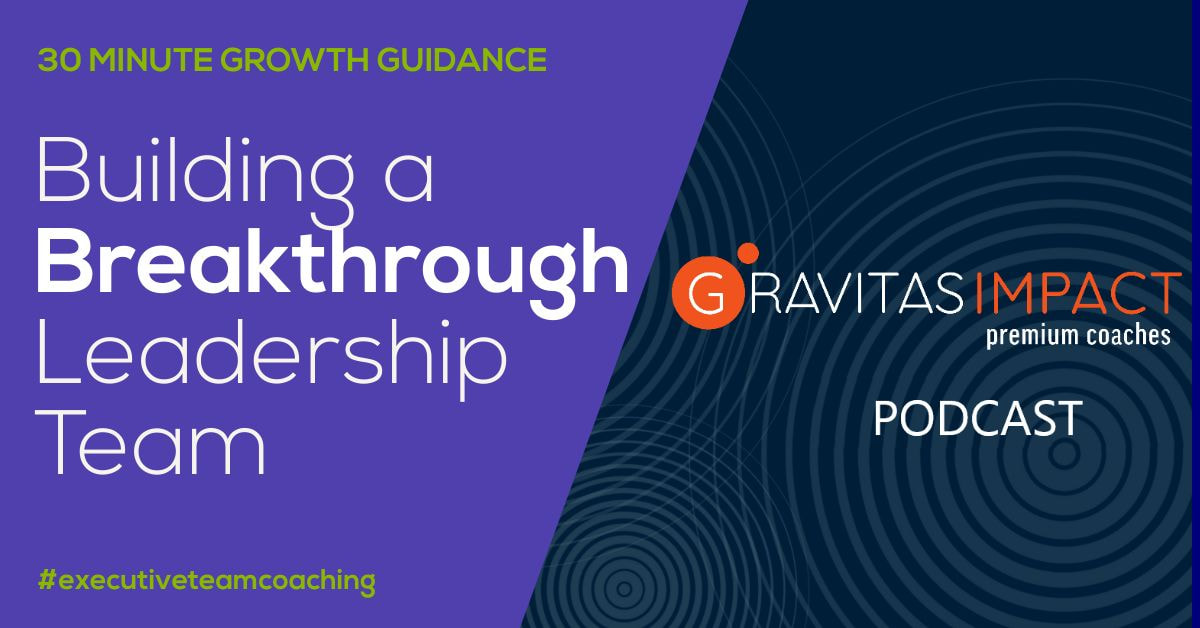|
In a previous 5 minute growth tip article, I discussed how strategy is not a lengthy action plan but the evolution of a central idea about how a company can be unique and valuable to its customers.
So if a strategy is about how the company needs to compete, then how does a CEO and their A player leadership team make it happen? With a best practice execution plan and process. The Execution Challenge In my experience over the last 16 years working with leadership teams, when CEOs and owners of mid-size companies decide to do formal planning with their leadership team, they often go through a traditional strategic planning process. However, this often only goes so far. Many strategic plans include a mission (or purpose), vision and values - all important - yet little, if anything, about how the company will compete in the market. And often, these documents have vague plans for implementing whatever rough direction they’ve set out: some high level multi-year priorities, or maybe some one year initiatives. In the best case, an annual budget is built with the strategic plan in mind. From there, leadership team members will report on their numbers quarterly, or maybe monthly. In the meantime, the CEO assumes the leaders are working on making improvements and changes in their departments that align with the high level priorities. After a couple of quarters, a few things can happen:
Does this pattern seem familiar? Does it cause drama, tension and low morale? Usually so. Is it efficient? Not really. Does this hamper progress, growth and profitability? For sure it does. And is it any fun? No. So, what’s the solution? Not a traditional strategic plan. But a strategy (which I outlined here) and an execution plan and process. Our 3 key disciplines of low drama execution describe how it works: 1) Metrics and Targets, 2) Priorities and 3) an effective Meeting Rhythm. Metrics and Targets Watching the numbers may seem like the most obvious of the three disciplines. We all know that tracking financial results is an important part of monitoring whether we’re on track. However, there are other key numbers to monitor as well. While some metrics tell us how we’ve done, others give us an indication of how we’re going to do. This is the difference between lagging metrics and leading metrics. For a company as a whole, lagging metrics will be things like financial results, units delivered and market share. Some leading metrics may be customer loyalty, on-time delivery, employee engagement or the percentage of employees that are A players. We want to set long term targets for our key metrics - say for 3 to 5 years out. These targets should align with our 10 to 30 year vision, or big hairy audacious goal, as well as our best-guess estimates of what’s possible with the core customer and sandbox we chose in our strategy. From there, we can set goals for those same metrics for the next year. For most of those metrics, we’ll also set goals for the first quarter. And finally, for some metrics, often leading metrics, we might be able to set monthly or even weekly milestones. Setting short-term goals that align with mid-term targets that align with a longer term vision allows the leadership team to commit to biting off a certain amount of progress each quarter. This way, we can check that we’re making enough progress over the weeks, months and quarters to achieve what we need to for the year, which will contribute to reaching our 3 to 5 year targets and our vision. Priorities Metrics measure the results and state of our day to day operations, and how they’re progressing towards our vision. Priorities, on the other hand, are the changes and improvements to those operations. These are what we want and need to implement to make it possible to achieve those mid to long term goals and targets. Going back to my first article in this series on how companies need to do things differently to continue to grow and profitably, these priorities represent, in part, those very structures, systems and processes. Priorities may also be about building or buying new facilities, equipment, or other significant capital assets to expand or replace capacity. Priorities should also build the capabilities needed to bring to life or strengthen the unique brand promises we chose in our strategy. Like with metrics, we chunk these down from long term to mid term to short term. This again helps us make progress every quarter that supports the progress we want to make over time. We can start with the 3 to 5 year priorities (we sometimes call these Key Thrusts or Key Capabilities). These are the broad, multi-year categories of change and improvement that need to happen to support achieving our 3 to 5 year targets. For example, “developing leadership capability at all levels” or “automating our production processes”. Both likely take multiple years. From our 3 to 5 year priorities, we’ll identify our 1 year priorities (we sometimes call these Initiatives). They capture the handful of large multi-quarter change projects that bite off a chunk of one or more of our 3 to 5 year priorities. And from our annual priorities, we’ll choose quarterly priorities (we sometimes call these Rocks). These are the multi-month change projects that will help us complete one or more of our annual priorities. An Effective Meeting Rhythm It’s great to know what targets need to be achieved and what priorities have to be accomplished over the next quarter to make enough progress towards our long term goals. But we know that unforeseen things will happen during the quarter. Problems will come up. Things can get forgotten. People can lose focus. So, how do we make sure our leadership team executes on our quarterly plan in the midst of all that? Through regular communication. An effective and efficient meeting rhythm is the key. This meeting rhythm includes:
The purpose of weekly leadership team meetings are to check that our metrics and priorities are on track, to take corrective action, and to problem solve where needed. Daily leadership team huddles are to keep all team members in sync throughout the week and identify problems quickly so they can be resolved as they come up. Monthly leadership team meetings are for checking that our metrics, priorities AND monthly financial results are on track, taking corrective action, adjusting the plan as needed and tackling larger tactical or strategic issues. Quarterly planning meetings are to check what we accomplished over the last quarter, adjust course for the year and set our quarterly goals and priorities for the next 90 days. The annual planning meeting is for assessing overall progress, noting market trends, adjusting our strategy, long term vision and 3-5 year targets and priorities, and deciding what we’ll bite off with our goals and priorities for the coming year and for the first quarter. With a clear purpose and a proven agenda for each type of meeting, and with the right people in the roles of facilitator, time-keeper and note-taker, these meetings can efficiently keep the leadership team and its members focused and executing throughout the year. Pulling it all together A clear, aligned execution plan and an effective execution process will minimize drama and maximize efficiency and goal achievement. However, this will work best if we create the execution plan with the leadership team, so there is efficient leadership team buy-in. And this goes for the strategy as well. Combine all this with strong accountability practices and having A players on our leadership team, and we have a powerful mixture to reliably implement the structures, systems and processes to implement our strategy, build capacity, and grow consistently and profitably...AND enjoy the ride. That said, this all may seem daunting if you and your leadership team are too busy working in the weeds. If that’s you - and most CEOs I meet have this challenge - keep an eye open for my next article on how to shift from working mostly “in the business” to working more “on the business”, and having more time for you and your family as well. How can you execute with less drama in your company? To find out how to have more efficient execution to grow more easily, quickly and profitability, AND enjoy the ride, try our complimentary Agile Growth Checklist. This self-service questionnaire takes 5 to 10 minutes to complete. You'll receive the checklist with your responses immediately. Within 24 hours, you'll receive a compiled report highlighting areas to improve. Complete section 4 to check your execution processes. Or complete all 7 sections to find out how your company is doing in each of the 7 areas needed to produce more rapid, profitable and sustainable growth. This report is complementary and involves no obligation. ‘‘Working on health works. It’s good for your people and for your bottom line.” McKinsey (2017) In partnership with The Growth Faculty, Wellspring Growth Systems is delighted to offer you a $50 discount to see Patrick Lencioni in a live virtual event this April: Patrick Lencioni - 4 Pillars of High-Performance Cultures. Teamwork and High-Performance Culture in the Post-Pandemic Environment: Our reliance on teams has hit a peak. But when teams fail, businesses stumble. Bring your team to a live virtual event with organizational health pioneer, best-selling author and in-demand speaker, Patrick Lencioni, and get access to over 20 years of research on organizational health and building a high-performance culture. New York Times best-selling author of The 5 Dysfunctions of a Team (plus 11 other books), Patrick Lencioni is the global pioneer of the organisational health movement. McKinsey research shows a healthy organisation delivers roughly 3x the returns to stakeholders than less healthy companies. And, companies that institute initiatives to improve health see tangible performance increases in as little as six months. Named "one of the most in demand speakers in America" by the Wall Street Journal, Patrick Lencioni will deliver a fast-paced, highly practical event teaching business leaders and their teams how to create a healthy organisation and high-performing culture that takes advantage of the talent within their teams. YOU WILL LEARN: Practical and highly entertaining, over 2.5 hours you’ll learn:
You will leave with immediately actionable frameworks and tools that have transformed thousands of businesses globally. YOU'LL BE BLOWN AWAY BY THE INTERACTIVE VIRTUAL VENUE Patrick Lencioni will present live in real-time via The Growth Faculty's bespoke virtual venue, now rated 9.5/10 by 1000s of business leaders. PAST DELEGATES OF PATRICK LENCIONI SAID... "Thought-provoking and challenged the status quo. Practical strategies to build high performing teams." Kate Massey, JCurve Solutions "Patrick Lencioni was a truly engaging and inspiring speaker." Yvonne Faulks, Grant Thornton Australia "Content was the best I've been exposed to..." Tom Keady, Colliers *** “Not finance. Not strategy. Not technology. It is teamwork that remains the ultimate competitive advantage, both because it is so powerful and so rare.” Patrick Lencioni STANDARD RATE: $295 USD | WELLSPRING GROWTH SYSTEMS NETWORK: $245 USD Tuesday 27th April 2021, 7pm SK / 8pm MB How can you create a high performance culture? To find out how you can strengthen your culture to grow more easily, quickly and profitability, try our complimentary Agile Growth Checklist. This self-service questionnaire takes 5 to 10 minutes to complete. You'll receive the checklist with your responses immediately. Within 24 hours, you'll receive a compiled report highlighting areas to improve. This report is complementary and involves no obligation. Complete sections 1 to 4 to check your high performance culture*. Or complete all 7 sections to find out how your company is doing in each of the 7 areas needed to produce more rapid, profitable and sustainable growth. *Many of Patrick Lencioni’s best practices are included in our Agile Growth Checklist, as well as many others developed by world-renowned business leaders, researchers and professionals.
Patrick Lencioni is well-known for his business best-sellers: The Five Dysfuctions of a Team (which I introduced here last month), The Ideal Team Player, and Death by Meeting. His last best-seller, The Advantage - Why Organizational Health Trumps Everything Else in Business, is the culmination and integration of his previous works. It’s one of the most comprehensive and accessible books I’ve read on the key elements of an effective organization. In fact, many of the tools and concepts in the Scaling Up system and 7 Attributes of Agile Growth framework we use with companies are found in The Advantage. The Advantage is also one of the frameworks Patrick will be covering in his upcoming live virtual event. In the book, Lencioni describes a healthy organization as one with minimal dysfunction, politics, and confusion. Instead, clarity and alignment reign, resulting in strong performance. He argues that organizational health is the greatest advantage any business can have. And yet, it is largely ignored by business leaders. Lencioni clearly and logically lays out the four disciplines to creating a healthy organization: 1) build a cohesive leadership team - essentially the five focus-areas described in the Five Dysfunctions of a team: trust, conflict, commitment, accountability and results; 2) create clarity - of purpose, behaviours (ie. core values), offerings, competitive strategy, priorities, performance metrics and leadership team member roles; 3) overcommunicate clarity - repeated, aligned cascading communication from leadership team members to their direct reports and down the line; 4) reinforce clarity - through human systems - every process that involves people, from hiring and people management to training, compensation and termination. Lencioni then slips in a 5th unofficial, yet critical, discipline titled “The Centrality of Meetings”, drawing from his Death by Meetings framework. In it, he underlines that no action, activity or process is more central to a healthy organization than effective meetings, from the daily check-in (huddle) through to the quarterly off-site. A key point in The Advantage, which may be missed or forgotten, is that the single biggest factor determining whether an organization is going to get healthier, is the genuine commitment and active involvement of the top leader - the owner-operator, CEO or president. Book length: 240 pages, 5 hour 25 minute audio. Soundview summary: 8 pages, 21 minute audio. GetAbstract summary: 5 pages, 10 minute audio. How can you strengthen your organization? To find out how you can make your organization healthier to grow more easily, quickly and profitability, try our complimentary Agile Growth Checklist*. This self-service questionnaire takes 5 to 10 minutes to complete. You'll receive the checklist with your responses immediately. Within 24 hours, you'll receive a compiled report highlighting areas to improve. This report is complementary and involves no obligation. *Many of Patrick Lencioni’s best practices are included in our Agile Growth Checklist, as well as many others developed by world-renowned business leaders, researchers and professionals. Continuing with my article theme over the last few weeks of building a great leadership team, I’m excited to share a Gravitas Impact podcast on the topic from my colleague and mentor Mike Goldman in New Jersey. Based on his newly released book, Breakthrough Leadership Team, he shares his perspective, after thirty years consulting and coaching, that the biggest difference between a great company and mediocre company is the leadership team. It’s the growth “linchpin”, as I call it. In this 30 minute podcast, Mike shares more broadly how to build a great leadership team, and also dives deep into the one biggest challenge to that effort - ensuring the right leaders are on the team. Subscribe to Gravitas Impact podcast: Android
How can you strengthen your leadership team? To find out what you can improve in your leadership team to grow more easily, quickly and profitability, try our complimentary Agile Growth Checklist. This self-service questionnaire takes 5 to 10 minutes to complete. You'll receive the checklist with your responses immediately. Within 24 hours, you'll receive a compiled report highlighting areas to improve. This report is complementary and involves no obligation. Complete section 1, 2 and 4 to check your leadership team’s collaboration, talent and accountability processes. Or complete all 7 sections to find out how your company is doing in each of the 7 areas needed to produce more rapid, profitable and sustainable growth. |
Archives
December 2029
Categories
All
|






 RSS Feed
RSS Feed
